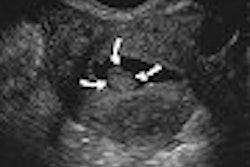SAN FRANCISCO - Osteopathic manipulative treatment (OMT) for carpal tunnel syndrome (CTS) may be no better than a sonographic placebo treatment, according to a presentation Monday at the American Osteopathic Association (AOA) meeting.
The value of OMT, which has been part of the standard treatment repertoire in osteopathy, is a topic of much debate in the specialty. OMT has been credited with reducing pain and improving function in musculoskeletal and spinal disorders. A 1999 study in the New England Journal of Medicine found that patients with back pain benefited from OMT and required less medication (NEJM, November 4, 1999, Vol.341:19, pp. 1426-1431).
But some osteopaths believe that there is still not enough science to back up such claims (Journal of the American Osteopathic Association, October 2004, Vol. 104:10, pp. 405-406).
As a result, osteopathic physicians are taking a harder look at OMT, and the results have been less than encouraging. A recent study in JAOA found that the OMT protocol does not provide any benefits for knee or hip arthroplasty patients during rehabilitation (May 2004, Vol. 104:5, pp. 193-202).
Patricia Meyer and colleagues evaluated the benefits of OMT versus a placebo subtherapeutic ultrasound in CTS patients, and presented their initial results in a poster at the AOA meeting. The hypothesis was that OMT would decrease pain while also improving symptoms and daily function. Meyer's group is from the Texas College of Osteopathic Medicine at the University of North Texas Health Science Center in Fort Worth.
"By far, the most common cause of CTS is from an idiopathic or occupations mechanism that results from repetitive motion of the wrist joint and subinflammatory processes," they wrote. CTS generally affects people in the 30-60 age group, particularly women, they added.
For this ongoing study, 21 people with diagnosed CTS, including nerve impingement, were enrolled. They were divided into group A, who underwent OMT, and group B, who were treated with subtherapeutic ultrasound. All patients had at least six rounds of treatment with assessments measured beforehand, prior to the fourth treatment, and one week post-treatment.
OMT was applied to the arm, shoulder, neck, and back in group A. The authors chose ultrasound for group B because "the ultrasound treatment fulfills the role of the placebo by providing genuine anticipation of therapeutic effect ... allowing for tactile stimulation."
Both groups also underwent MRI exams before and after treatment. Previous studies have indicated that MRI analysis of the cross-sectional area of the carpal tunnel can demonstrate improvements in the carpal canal (JAOA, December 1993, Vol. 93:12, pp. 1273-1278).
According to the results, "although there were significant changes over time in each group ... there were not significant differences between the two groups over time," the group wrote. While the OMT did improve functional status, ultimately there was no statistical significance between that protocol and the sonographic placebo.
The group concluded that OMT alone, without accompanying strengthening exercises, does not seem to help patients. Also, an OMT protocol must include regions outside the wrist, including sympathetic innervation to the upper extremity (spinal levels T2-T8). The researchers said they would continue with this study in order to reach the goal of 50 patients.
By Shalmali Pal
AuntMinnie.com staff writer
November 9, 2004
Related Reading
Tackling ergonomic issues in sonography, September 13, 2004
Sonography useful in diagnosing carpal tunnel syndrome, July 5, 2004
Work-related musculoskeletal injuries continue to plague rads, August 20, 2003
Copyright © 2004 AuntMinnie.com


















